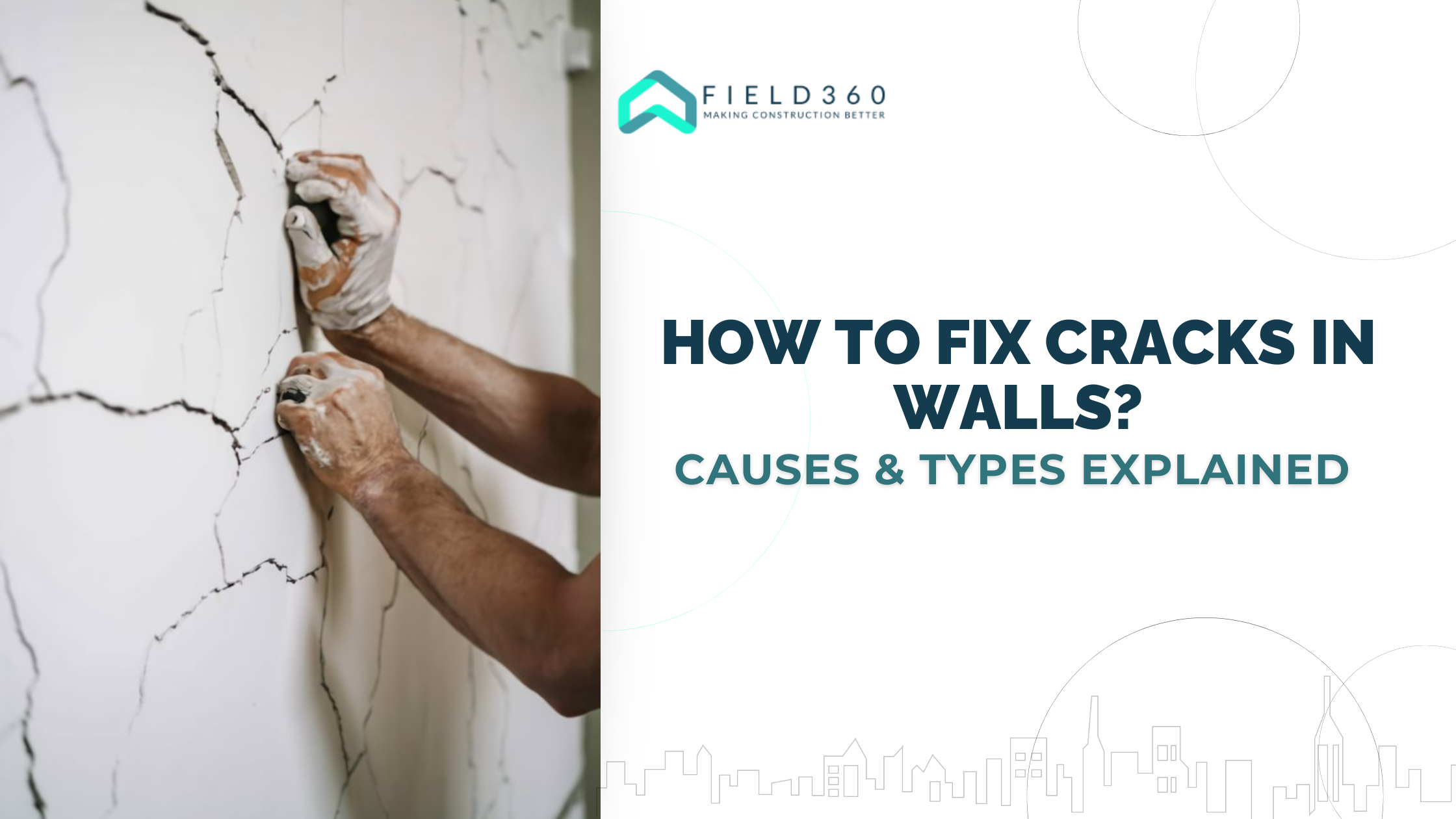Are you worried about the cracks in the walls too? Whether it’s your new dream home, a rented property, or a family lineage, it happens to each of us—an accident occurs, and the next thing you know, vertical and horizontal cracks in the walls. Those who have been living in their homes for more than a decade or face extreme weather conditions may notice tiny cracks in walls or even gaping holes in their interior as well as exteriors.
Fixing cracks in walls is a relatively simple task that can be set to work by the owners with a little bit of knowledge and elbow grease. Whether you’re dealing with drywall, concrete, or plaster, how can you fix cracks in walls for good?
In this blog, we will include the main reason behind the confusion, that is what causes cracks in walls? We would also cover the types of cracks in walls and how one can fix these cracks with minimal effort.
What Causes Cracks in Walls?
These can be various factors that cause cracks in walls. From settling to moisture even internal structural issues can affect your walls significantly. New buildings “settle” over time, causing hairline cracks in walls. These cracks are usually not serious and appear around doors and windows. Foundation issues due to poor soil compaction or shifting soil can also cause cracks in walls. Wide or growing cracks and uneven floors majorly affect a building’s structure and should not be taken lightly.
Water damage from roof leaks, plumbing leaks, or condensation also causes serious cracks in walls indicated by stains, peeling paint, and mold growth in walls. Another reason for cracking walls can be high humidity. Foundation Issues can also result in major issues such as doors/windows sticking, cracks in basement walls, and uneven floors. Another problem can be sagging ceilings and doors/windows. Expansion and contraction of materials due to extreme temperatures and shrinking of concrete foundation as it cures cause severe cracks in walls.
Various other factors such as vibration from traffic, construction, or earthquakes, shrinking of dry clay soil, pulling on foundations, and improper installation can cause intense hairline cracks in walls and uneven surfaces.
To keep your home safe and dry, it’s smart to check out Home Waterproofing Steps To Keep Your Home Healthy. And if you’re working on your roof, you’ll want to know How to Choose the Best Cement for Roof to make sure it lasts a long time.
Types of Cracks on Walls
| Type | Appearance | Location | Potential Cause | Severity |
| Hairline Crack | Thin, less than 1/16 inch wide | Anywhere | Normal settling, shrinkage, temperature changes | Usually not serious |
| Vertical Cracks in Walls | Runs straight up and down | Around door frames, windows, corners | Normal settling, minor shifts due to temperature or moisture | Usually not serious, but monitor for changes |
| Horizontal Cracks in walls | Runs parallel to the ground | Near the foundation, above frames, windows | Foundation problems, uneven settling, structural issues | Can be serious, consult a professional |
| Diagonal Crack | Slants across walls | Corners of doors, windows, around beams | Foundation problems, structural issues, shrinking soil | Serious, consult a professional immediately |
| Stair-Step Crack | Looks like steps, and often follows mortar joints | Brick or masonry walls | Foundation problems, uneven settling | Serious, consult a professional immediately |
| Settlement Crack | Often wider at the top, tapers downward | Around windows, foundation | Uneven settling, foundation problems | Can be serious, monitor for changes and consult a professional if widening |
| Shrinkage Crack | Occurs in concrete or plaster | Anywhere on the wall | Improper curing, drying shrinkage | Can be serious if large or numerous, consult a professional |
How to Fix Cracks in Walls?
There are many steps involved in the guide to fixing cracks in walls. First and foremost, acknowledge the type of wall, i.e. whether it is drywall concrete or plaster wall.
Fix Cracks in Drywall
Drywall is a specific type of wall panel made of gypsum plaster and sandwiched between two sheets of paper, which is a commonly used material for interior walls in many homes and buildings.
Following are the steps to fixing a crack in drywall :
- Widen the crack with a utility knife
- Buy a joint combination that can either be premixed or ‘setting-type’
- Clean the area around the crack to remove debris or dust
- Apply a thin layer of joint compound to the cracks in walls and spread it evenly
- Keep applying as many coats as you feel necessary
- Allow it at least 24 hours to dry out
- Once dry, use sandpaper to smooth or dry out any rough spots or excess compound
- Finish by painting over the area to match the surrounding wall
Fix Cracks in Plaster Wall
Plaster walls are often found in older homes and buildings, and cracks in these walls can be caused by a variety of factors, including settling of the foundation, temperature changes, or simply the natural aging of the plaster.
Here are a few steps to follow when fixing a plaster wall :
- Start by pressing gently over the wall to see if the plaster moves or comes apart
- Clean the area and widen the crack using a putty knife
- Spread ready mixed or setting-type joint compound over the crack and fill it completely
- Considering the size of the crack if large, a self-adhesive fiberglass mesh tape must be applied before the plaster
- Apply a few layers of compound (maybe 2 or 3) over the taped area
- Finally, paint over the patched area to match the rest of the wall
Fix Cracks in the Concrete Wall
Concrete walls are usually found in basements, garages, and other areas of a home, and cracks in these walls can be the result of a variety of factors, including settling of the foundation, temperature changes, or water damage.
Here are a few steps that can be followed to fix a crack in a concrete wall :
- Widen the crack slightly with a chisel or hammer
- Clean the area around the crack with a wire brush to remove any loose debris
- Use a bonding adhesive to prime the cracked area with an old paintbrush
- Apply multiple coats of the concrete patching with a putty knife by pressing them into the crack and making it level with the rest of the wall
- Finish by ensuring the repair matches with the rest of the wall
Conclusion
Cracks in walls are a common issue when it comes to drywall, concrete, or plaster walls. However, with the right tools, materials, and guidance, you can fix cracks in walls in no time. But why do the job when Field360 can do it for you? Field360 is a construction project management app and your absolute buddy when it comes to construction projects. Now avoid the hassle of tracking multiple chores with our one-stop progress tracker with on-site and off-site updates.












